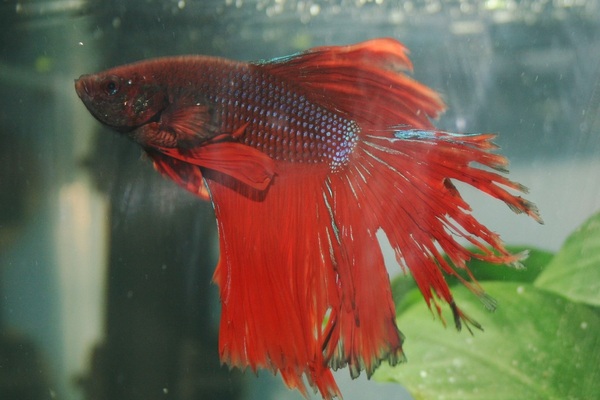Fin rot is a common but potentially dangerous condition that affects many aquarium fish. It’s important to understand its causes, symptoms, and treatment options to ensure the health of your aquatic pets. This article will explore everything you need to know, from prevention to treatment and how to stop fin rot from reoccurring.
Table of Contents
What is Fin Rot, and What Are Its Causes?
Bacteria
Untidy Aquarium Conditions
Unhealthy Diet
Poor Water Quality
Overcrowding
Causes of Fin Rot
Symptoms of Fin Rot
Restlessness and Agitation
Discoloration of Fins
Spot Formation
Cloudy Eyes
Ulcer Formation
How to Treat Fin Rot in Fish?
Medications for Fin Rot
Natural Remedies for Fin Rot
Setting Up a Quarantine Tank
Recovery Timeline for Fin Rot
How to Prevent Fin Rot From Re-Occurring
Maintaining Clean Aquarium Conditions
Proper Feeding Practices
Regular Monitoring of Water Parameters
Quarantine New Fish
Avoid Overcrowding
FAQs About Fin Rot
Can Fin Rot Be Cured Completely?
Is Fin Rot Contagious?
How Long Does It Take to Treat Fin Rot?
Can Fish Regrow Their Fins After Fin Rot?
What Happens If Fin Rot Is Left Untreated?

Fin rot is a common and distressing bacterial or fungal infection that affects the fins of aquarium fish. This condition can progress rapidly, leading to frayed or discolored fins, and if left untreated, it may result in permanent damage or death. Understanding the causes is the first step in prevention and treatment.
Bacteria: Pathogenic bacteria, such as Aeromonas or Pseudomonas, thrive in aquariums with poor water quality and stress-inducing conditions.
Untidy Aquarium Conditions: Accumulated waste, leftover food, and debris can create an environment where harmful bacteria flourish.
Unhealthy Diet: Malnutrition weakens the fish’s immune system, making it more susceptible to infections.
Poor Water Quality: High levels of ammonia, nitrites, or fluctuating pH levels stress fish and encourage bacterial growth.
Overcrowding: Too many fish in one tank increases waste levels and competition, causing stress and higher risks of disease transmission.
Spotting fin rot early is crucial for effective treatment. Here are the most common symptoms:
Restlessness and Agitation: Fish may exhibit erratic swimming behavior due to discomfort or stress.
Discoloration of Fins: The fins may turn pale, dark, or develop a white edge as the infection progresses.
Spot Formation: Dark or black spots might appear at the edges of the fins.
Cloudy Eyes: Some fish may develop cloudy eyes as an associated symptom of bacterial infection.
Ulcer Formation: In advanced cases, ulcers or open wounds may form near the base of the fins.
Fin rot is treatable if addressed promptly. The key is to improve aquarium conditions and administer appropriate treatments.
Use antibacterial or antifungal medications such as API Fin & Body Cure or Seachem Kanaplex.
Follow the dosage instructions carefully to avoid harming the fish or beneficial bacteria in the tank.
Aquarium Salt: Add 1 tablespoon of aquarium salt per 5 gallons of water to help reduce stress and fight infection.
Clean Water Changes: Replace 25-50% of the tank water daily to reduce harmful bacteria.
Move infected fish to a separate quarantine tank to prevent spreading the disease and to provide a controlled treatment environment.
With proper care, early-stage fin rot can clear up within a week. Severe cases may take several weeks for the fins to regrow fully.
Preventative measures are vital to ensuring the long-term health of your fish and tank ecosystem.
Regularly remove waste, uneaten food, and debris.
Clean or replace filter media monthly to maintain optimal filtration.
Feed your fish a balanced diet with high-quality flakes, pellets, or frozen food.
Avoid overfeeding, as leftover food contributes to poor water quality.
Use test kits to ensure ammonia and nitrite levels are at 0 ppm.
Maintain stable pH and water temperature suitable for your fish species.
Always quarantine new fish for 2-4 weeks before introducing them to your main tank. This prevents introducing diseases to the existing population.
Ensure your tank has enough space for each fish to thrive. Overcrowding causes stress and increases the likelihood of disease outbreaks.
Yes, fin rot is curable if detected and treated early. Fins can regrow with proper care.
It can be contagious if caused by bacteria, especially in poor water conditions. Always isolate infected fish.
Early cases can resolve within a week, while advanced infections may take several weeks.
Yes, fins can regrow, but the regrowth depends on the severity of the damage and the overall health of the fish.
If untreated, fin rot can lead to severe tissue damage, secondary infections, and potentially death.
By following these guidelines and keeping your aquarium in excellent condition, you can protect your fish from fin rot and other common diseases. Prevention and prompt action are the keys to maintaining a healthy, thriving aquatic environment.
animal tags: Fin-Ro-in-Fish
We created this article in conjunction with AI technology, then made sure it was fact-checked and edited by a Animals Top editor.